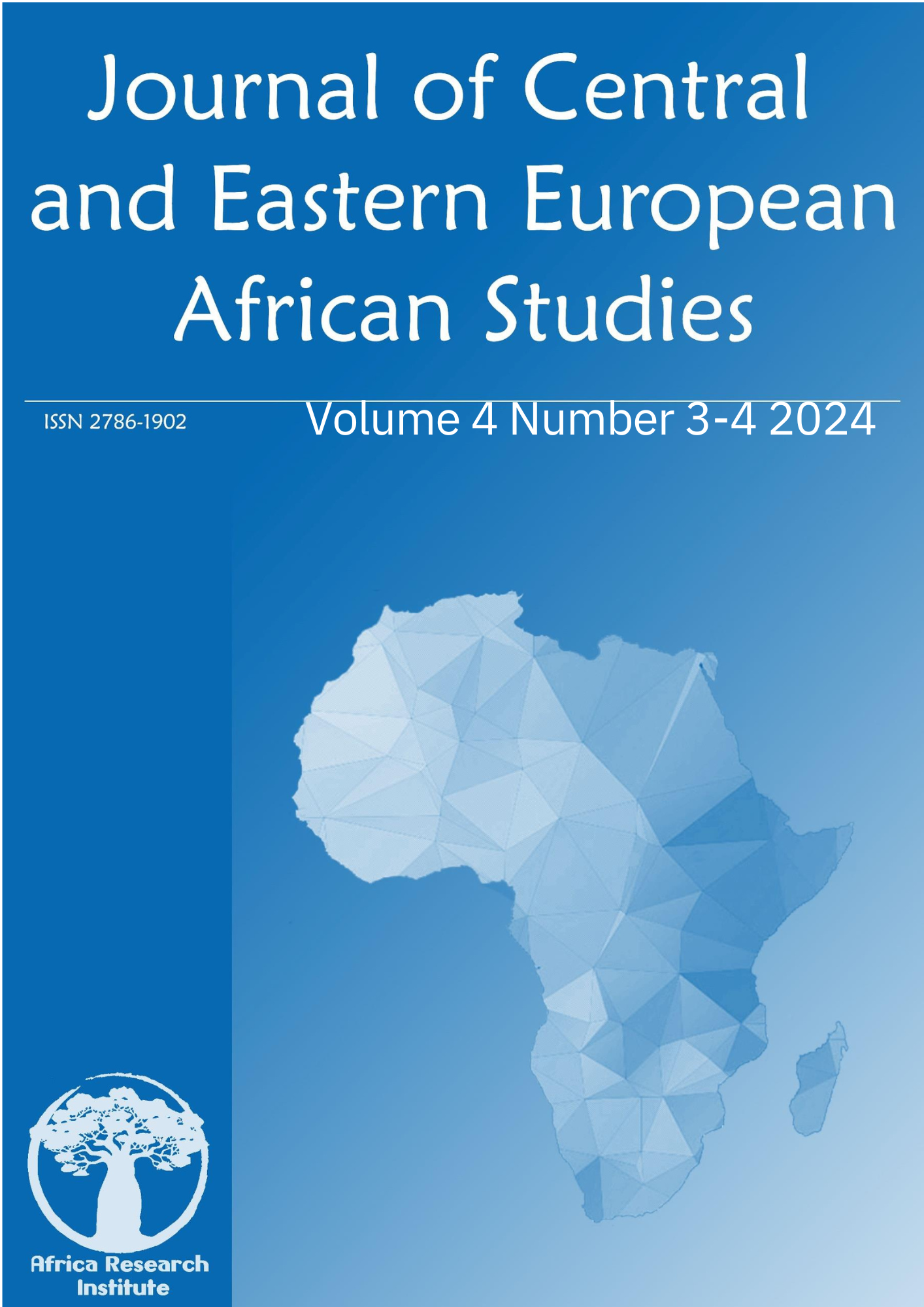Winning the War and Losing the Peace: An Analysis of Counter Boko Haram Terrorism in Northeast Nigeria
DOI:
https://doi.org/10.12700/jceeas.2024.4.3-4.292Keywords:
Terrorism, counterterrorism, sustainable peace, Kinetic Operations, Human RIghts Abuse, DisplacementAbstract
Abstract
This paper examines the multifaceted challenges and complexities surrounding the Nigerian government's counter-terrorism efforts. The study delves into the paradoxical situation of "winning the war but losing the peace," wherein the Nigerian military has achieved significant successes in degrading the operational capacity of Boko Haram, yet has struggled to establish a sustainable peace. It draws on various primary and secondary sources to analyze the historical context, socio-political dynamics, and strategic aspects of the counter-terrorism campaign. It evaluates both the military's kinetic operations and non-kinetic initiatives implemented to address the root causes of Boko Haram's rise, focusing on their effectiveness and limitations. It highlights the unintended consequences of military-centric strategies, including alleged human rights issues, displacement of populations, and exacerbation of grievances. It underscores the importance of a holistic approach that integrates military efforts with long-term socio-economic development, community engagement, and judiciary and security sector reforms to prevent the resurgence of extremism. In analyzing the complex interplay between security, development, and governance, the study contributes to the understanding of the intricate challenges that emerge when addressing terrorism issues in a fragile state context. It emphasizes the need for a nuanced, context-specific approach that goes beyond short-term military gains to ensure sustainable peace and stability. The findings of this study hold implications not only for Nigeria but also for other nations facing similar challenges, providing insights into the delicate balance between winning the war against terrorism and securing a lasting peace.
Keywords: Terrorism, Counterterrorism, Sustainable Peace, Kinetic Operations, Human rights abuse, Displacement.
References
Acemoglu, D., & Robinson, J. A. (2013). Why nations fail: The origins of power, prosperity, and poverty. London: Profile Books.
Anning, K. (2015). Nigeria: countering Boko Haram. In M. J. Williams & D. J. Ball (Eds.), Counter-terrorism: From the Cold War to the war on terror (Vol. 2, pp. 241-258). I.B. Tauris.
Atta, A. B. (2019). Boko Haram insurgency in Nigeria: Historical perspectives, drivers, and responses. Journal of Asian and African Studies, 54(6), 757-771. DOI: https://doi.org/10.1177/0021909618801935.
Aworinde, O. (2023). “Over $1bn Spent On Weaponry To Recover Territories From Boko Haram – Buhari”. https://www.channelstv.com/2023/01/18/over-1bn-spent-on-weaponry-to-recover-territories-from-boko-haram-buhari/
Collier, P. (2007). The bottom billion: Why the poorest countries are failing and what can be done about it. New York: Oxford University Press.
Creswell, J.W. (2003). Research design: Qualitative, quantitative and mixed methods approaches, (2nd ed.). Thousand Oaks: Sage.
Dulin, A., & Patiño, J. (2019). Countering Boko Haram’s violence: A deterrence–backlash perspective. Armed Forces & Society, 45(4), 723–745. https://www.jstor.org/stable/48609107
Federal Government of Nigeria (2022). Terrorism (Prevention and Prohibition) Act 2022 (“TPA 2022”) which repealed the former anti-terrorism legislation - Terrorism (Prevention) Act No. 10, 2011 - and amended in 2013.
Fukuyama, F. (2014). Political order and political decay: From the industrial revolution to the globalization of democracy. Farrar, Straus, and Giroux.
Higate, P., & Kamungi, P. (Eds.). (2018). Critical perspectives on counter-terrorism. Routledge.
Ibrahim, A. (2018). Countering terrorism in Nigeria: An appraisal of the Boko Haram crisis. Journal of Contemporary African Studies, 36(2), 277-295. DOI: https://doi.org/10.1080/02589001.2017.1362089
Idahosa, O., & Harrison, C. A. (2012). The United States and Nigerian relations: Diplomatic row over official terrorist label. Global Journal of Social Sciences, 11(1). Retrieved from www.globalJournalseries.com.
Kolawole, M. (2018). The dynamics of counter-terrorism in Nigeria: Between state and Non-state actors. Africa Spectrum, 53(1), 67-87.
Lynn, Z. (2004). The law of counterterrorism, Philadelphia, PA: University of Pennsylvania Press.
Obasi, R. A. (2020). Boko Haram terrorism and Nigeria's security dilemma. African Security Review, 29(3), 280-293. DOI: https://doi.org/10.1080/10246029.2020.1782379
Okpara, U. T., & Onapajo, H. (Eds.). (2020). Boko Haram: security considerations and the rise of an African Islamist Movement. Palgrave Macmillan.
Olurounbi, R. (2020). Nigeria – USA: Will Biden’s win reset relations with Abuja? The Africa Report. Retrieved from https://www.theafricareport.com/49641
Onuoha, F. (2013). Countering Boko Haram in Nigeria. African Security, 6(3-4), 175-194.
Smith, M. B. (2017). Counterterrorism and counterinsurgency in Nigeria: Analyzing the Boko Haram insurgency. Terrorism and Political Violence, 29(6), 1047-1066. DOI: https://doi.org/10.1080/09546553.2017.1293864
Ukiwo, U. (2015). Boko Haram: The anatomy of a crisis. Review of African Political Economy, 42(143), 479-484.
United Nations. (2020). Report of the Secretary-General on the activities of the United Nations Office for West Africa and the Sahel. Author.
Usman, M. A., & Adejoh, S. O. (2019). The challenges of counterterrorism in Nigeria: Boko Haram insurgency as a case study. Journal of Strategic Security, 12(2), 51-72. DOI: https://doi.org/10.5038/1944-0472.12.2.1717
Vanguard News online (May 12, 2023). 2,167 repentant Boko Haram graduates from FG’s programme – Official. Retrieved from: https://www.vanguardngr.com/2023/05/2167-repentant-boko-haram-graduate-from-fgs-programme-official/
Woolcock, M. (1998). Social capital and economic development: Toward a theoretical synthesis and policy framework. Theory and Society 27 (2), 151-208.
Yaqub, N. (2018). Understanding Boko Haram insurgency in Nigeria. Strategic Analysis, 42(5), 357-370. DOI: https://doi.org/10.1080/09700161.2018.1470667


